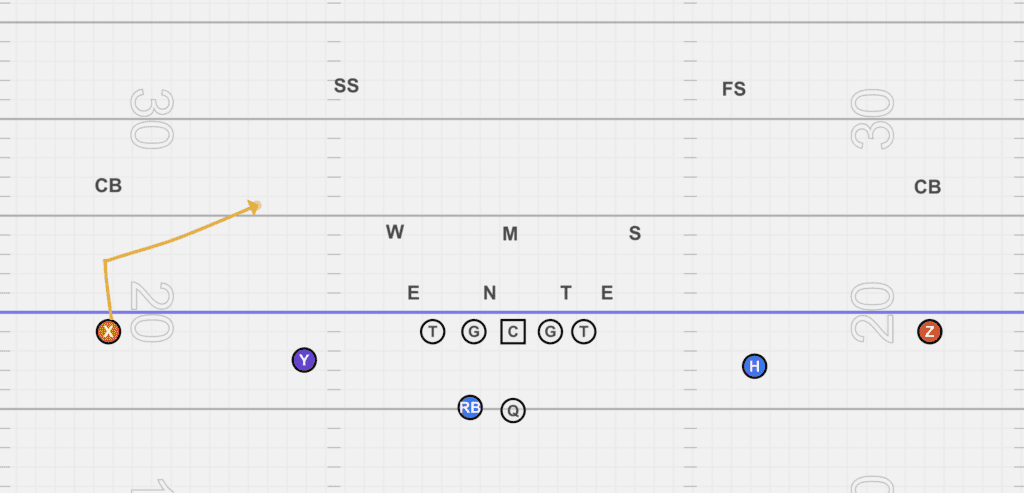
Football routes are what receivers run in order to get open so the quarterback can throw them the football. It’s up to receivers to get separated from defensive players by running clean, crisp routes.
In this article, we’re going to show you all of the football routes that receivers run, and how you can identify them when you watch a game.

The slant route is the most common route in football. It requires the wide receiver to run three steps upfield, plant their outside foot then run a 45-degree angle toward the middle of the defense.
The slant route is often run as part of the offense’s “quick game” package. This means the quarterback is going to get the ball and try to get rid of it as quickly as possible to the receiver running the slant.
The slant route is one of the hardest routes to cover for a defensive back. It also big play potential for offensive wide receivers who can make multiple defensive backs miss after the catch.

The flat route is part of the quick game concept for the offense.
The flat route is run by the receiver running as fast as they can to the outside off the line of scrimmage for a quick throw. This quick out-breaking route is great for teams to get the ball into empty space quickly.
This play is usually coupled with the slant route, so the offense can stretch the defense horizontally. This slant out route combination is one of the top route combinations in football.

The hitch route is a simple route that has the receiver run as fast as they can for 5 steps, then stop and turn around.
Hitch routes are great for defenses who have their defensive backs lined up far away. Offenses will take advantage of this space by having receivers run a hitch.
This is one of the easiest routes to run on the list and is one of the easiest for the quarterback to complete.
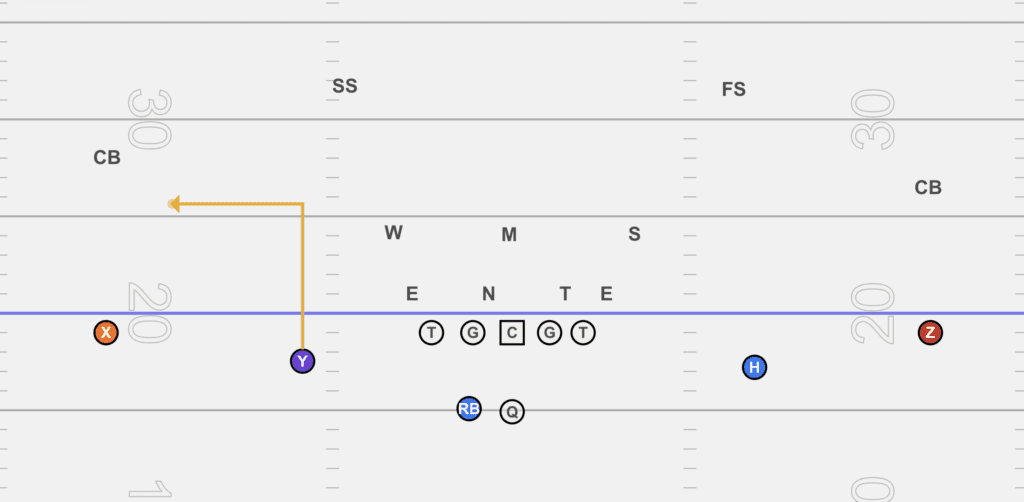
The out route requires the receiver to push vertically upfield for about 5 yards, before sharpening their cut at 90 degrees toward the sideline.
The out route is effective against defenses that have their players play toward the inside of the receiver. Naturally, the receiver has leverage to the outside to run an out route.

The drag route is a low crossing route, the receiver will get to 5 yards and continue to run horizontally across the field.
Drag routes are common for teams who like to throw to speedy receivers across the field. The drag route was a major staple in the West Coast offense.
The drag route helps to create space underneath and is often paired with the dig concept on the other side of the formation. This concept is called the shallow concept.
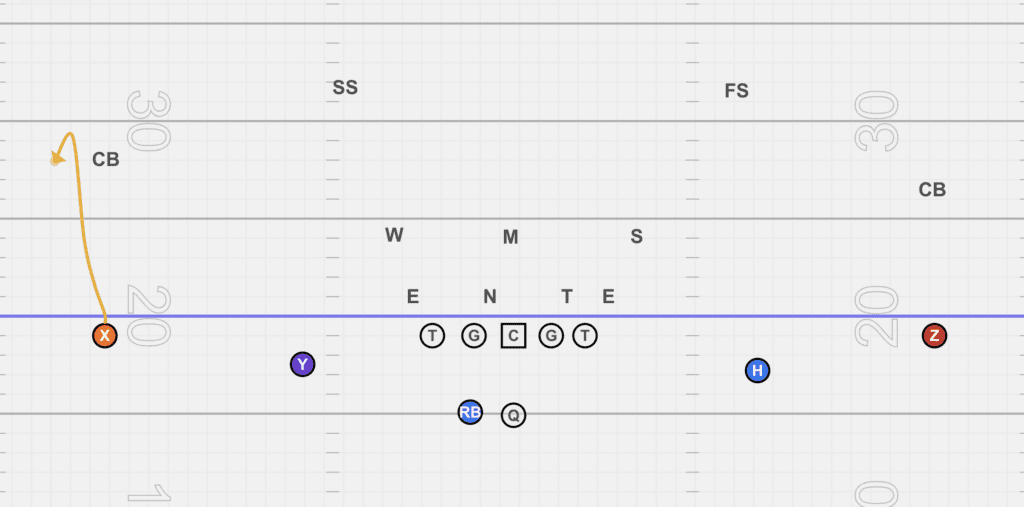
The comeback route is exactly like it sounds. It requires the receiver to come back to the quarterback.
By pushing vertically upfield, the comeback route is won when the receiver stops at about 10-12 yards and works back toward the football.
In the NFL, these are considered one of the hardest throws to make in football. It requires the quarterback to be extremely accurate and the receiver to have great body control as they are breaking.
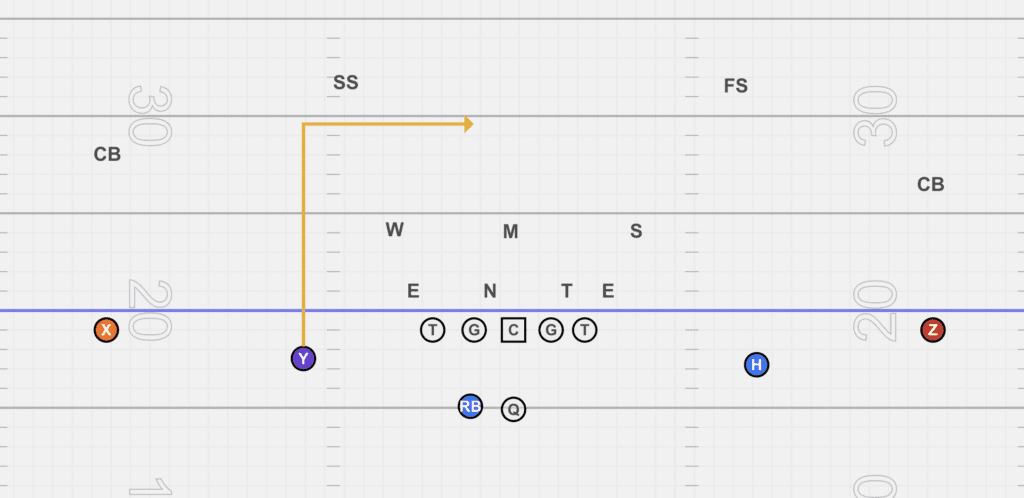
The dig route, also known as a square in, is an in-breaking route at 7 or 10 yards. This route requires the receiver to run straight as fast as they can, and once they hit 7 yards, plant off their outside foot and break to the inside.
The dig route is often paired with a post from another receiver, to help clear the safeties on defense out of the play.
This is one of the harder throws to make for the quarterback, as they need to lead the receiver to the football and throw it far enough downfield where they can run after the catch.

The curl route is when the receiver runs vertically for 10 yards, then curls to the inside and comes back to the quarterback.
The curl route is extremely effective against zone coverages. A lot of teams will use the curl route combined with an out route from the slot receiver to create an opening in the opponent’s zone.
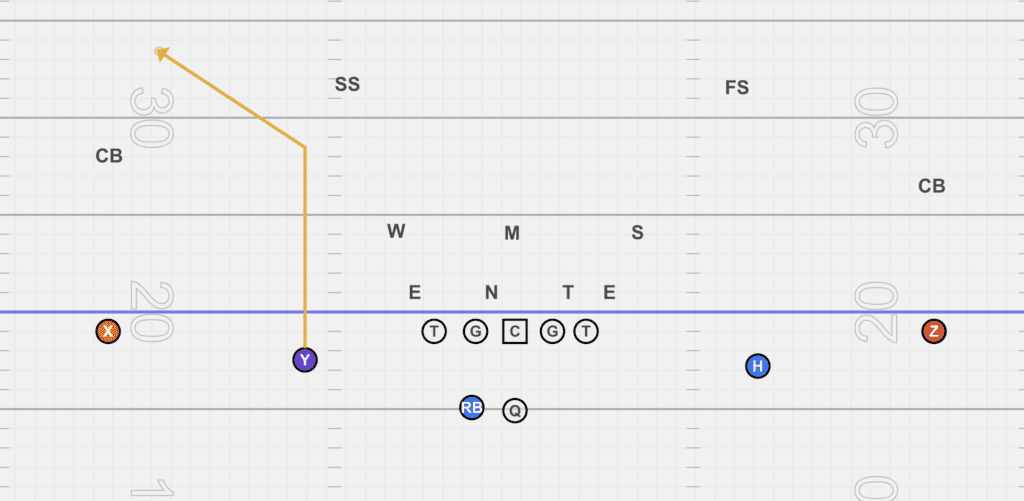
The corner route, also known as a 7 route in the route tree, is a route that is broken to the corner of the field.
Again, one of the harder throws for a quarterback to make, corner routes need to be thrown away from the defensive back, to the corner of the field.
Quarterbacks need a lot of arm strength to be able to reach the receivers on a corner route.

The post route is named after the direction it’s supposed to be aimed at, the field goal post.
The post route is a vertical route where the receiver runs 7 yards, before angling toward the middle of the field, where the field goal post is.
This route is extremely effective for quarterbacks with strong arms who can throw it accurately toward the middle of the field.
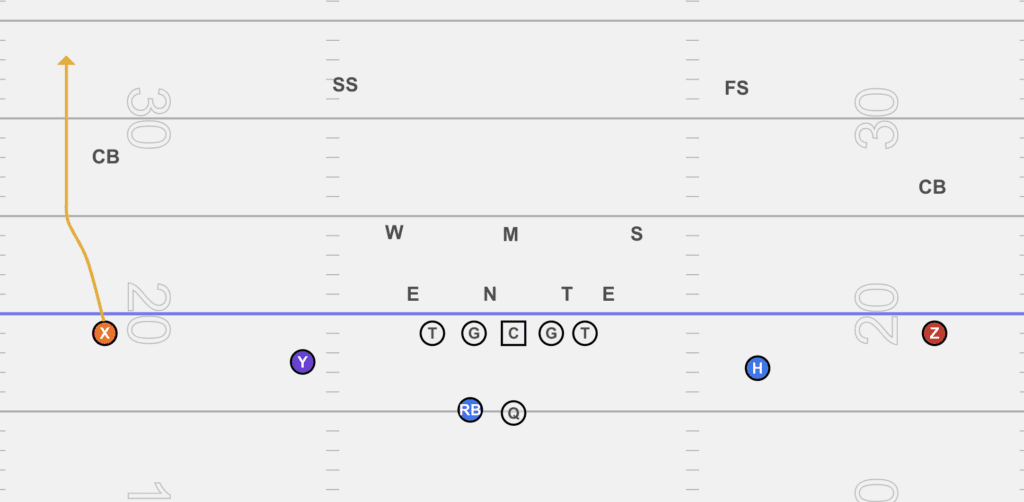
The go route, also known as a 9 in the route tree is a straight, vertical route. The receiver runs straight as fast as possible, and the quarterback will throw it as far as they can, to connect on the go route.
It’s the simplest route to run, but one of the hardest to catch. The receiver needs to concentrate on the football as they run 20-30 yards down the field.
A go route, that is thrown within the red zone, is often called a fade route. It’s common for teams to throw a quick “goal line fade” to try to score a touchdown, by having their best receiver run to the corner of the end zone, and the quarterback lob it up in the air.
More importantly, if they don’t stem or stack the defensive back, it will make catching the football even harder.

The seam route is similar to the go route, but it’s run by a slot receiver. It also bends toward the middle at the top of the route.
When running a seam route, the slot receiver will run 10 yards and then start to bend toward the middle of the field.
This route works well against teams that have 2 high safeties, such as a cover 2 or cover 4.
These routes are combination routes, meaning they are not traditionally run by teams every play.
These routes are run when a coach needs a big play, as they require more work to get open. These specialty routes take longer to develop, so they are often done by speedier receivers.
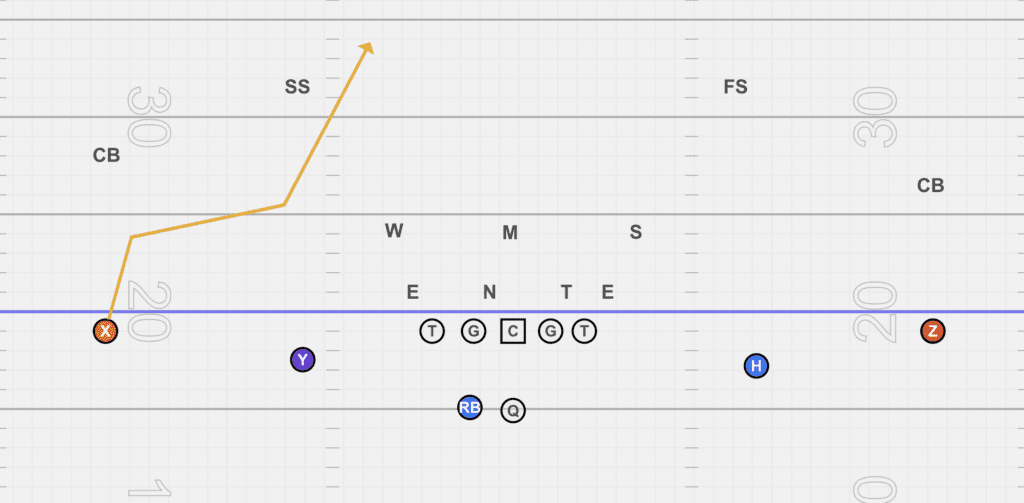
Sluggo, also known as slant and go, is a route that has the receivers pretending like they are running a slant, but then transitioning to a go route.
The sluggo is a great route to trick the defensive backs that they are running a slant. When the defensive back reacts to the slant and comes forward, the receiver then turns upfield to a go route.

The out and up is a route that has the receiver run a 5-yard out, but when they take 3 steps to the outside, they will convert it to a go route.
This route is great to trick the defense into thinking that you’re running an out route, only to turn it up to a go route. This route may take some time to develop so speed players must sell the out, before transitioning to the go route.
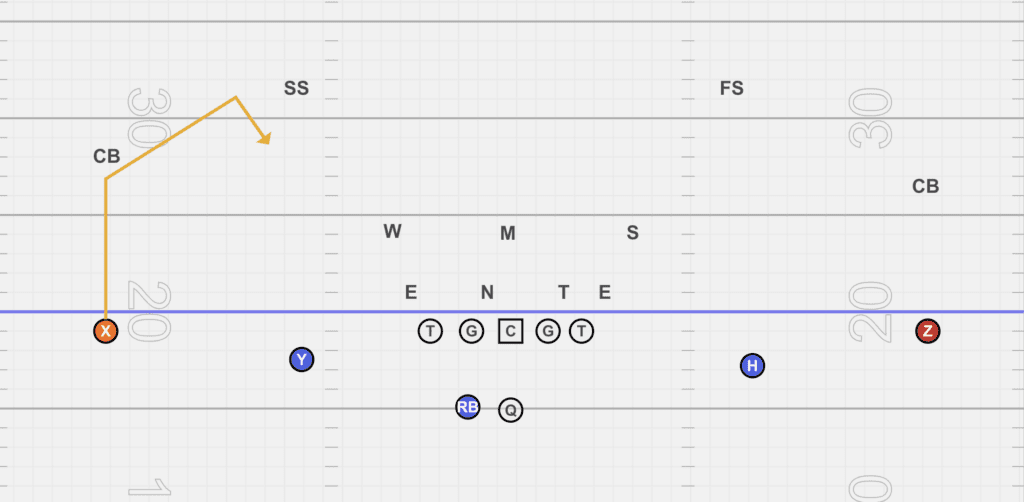
The post-sit route is used to defeat defensive zone coverage.
The post sit is run like a post, however, when the receiver gets 3 steps into their angle break, they will sit down and wait for the football.
This route takes a bit more time to develop, as the quarterback needs to wait for the receiver to make 2 different breaks before they will be open.
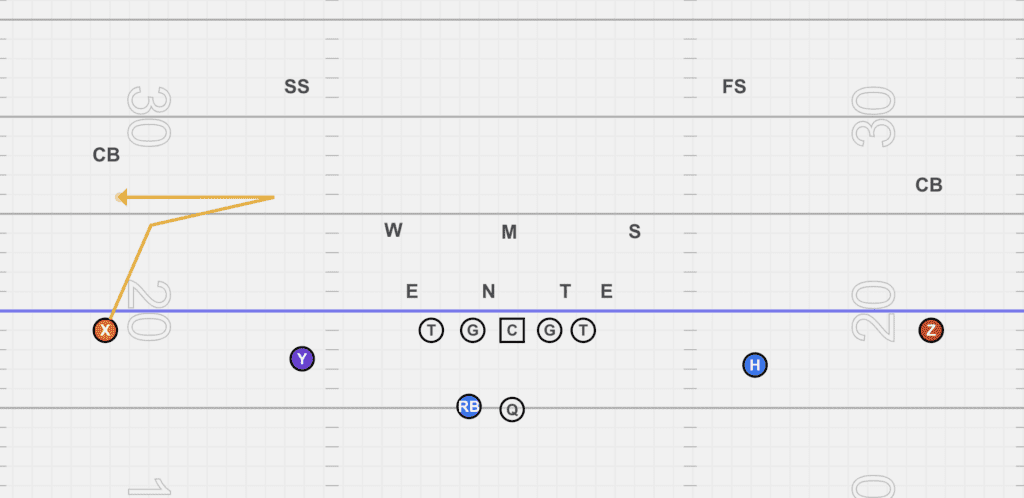
The whip route is one of the more common specialty routes because of how easy it is to do.
The whip route is when the receiver runs a slant, but on the third step, plants their foot and works back to an out route.
Whip routes are great for short yardage and goal line separation from defensive backs. You’ll often see a whip route run into the end zone for a touchdown.
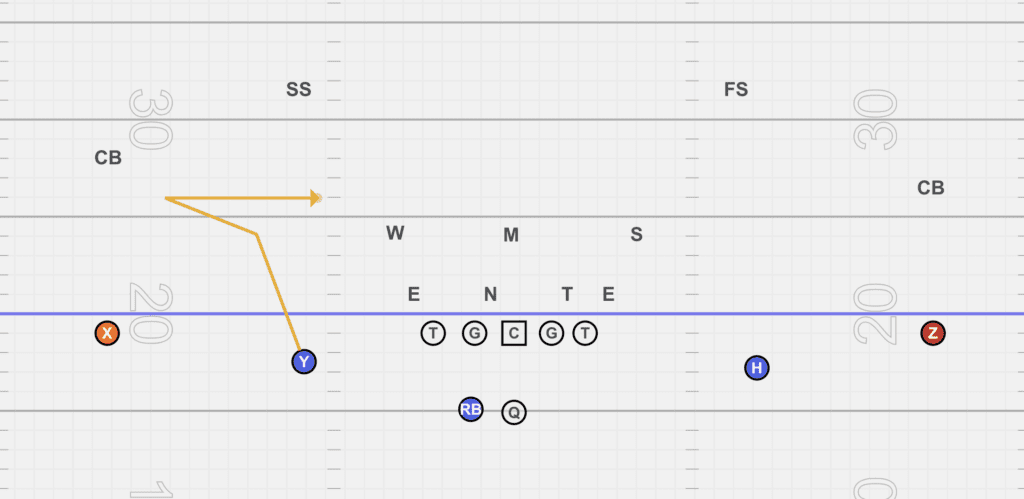
The pivot route is when the receiver runs an out route, but on their third step, works back toward the middle of the field like a dig route.
This double move is great against over aggressive defensive backs who overplay the out route.
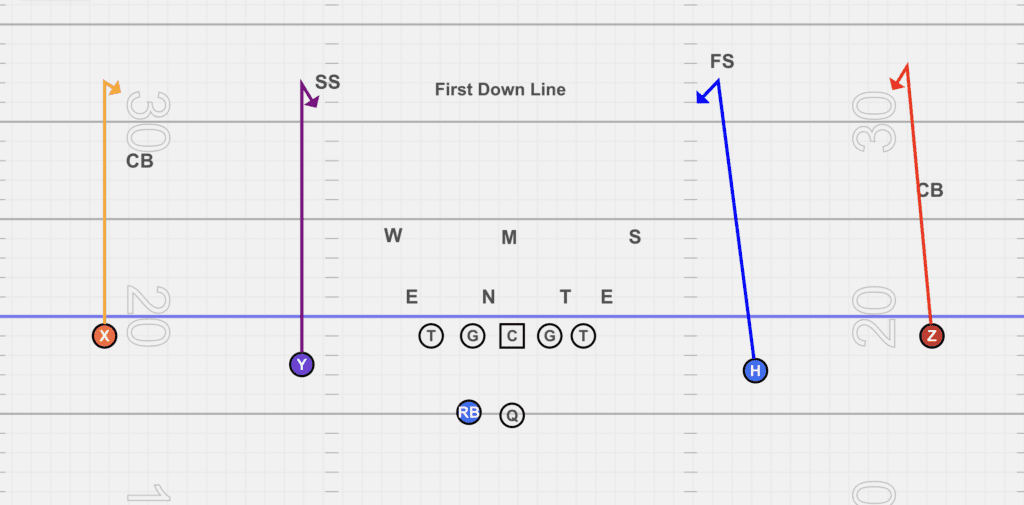
Stick routes are when the receiver runs to the first down line (also known as the sticks) and turns around. The depth of this route depends on where the first down line is located.
For example, if the play is 3rd and 10, the receivers will run 11 yards, making sure they can get to the first down line. Stick routes are common against teams who play soft on second/third down and along.

Read routes are a difficult concept to teach, however when they are used properly, they can do a lot of damage. These routes are often known as option routes.
The basis of the read route is to read the leverage and depth of the receiver. The receiver can then break off the route or change their direction based on what the defense is giving them.
For example, if the read route is to run a go route, but if the defensive back is far off, convert it to a hitch. This allows the receiver to get open because they are running the best possible route against the coverage that is being played against them.
If you think you have a good grasp on routes being run in football, we recommend you check this video out to learn some more advanced concepts.

If you enjoyed learning about wide receiver routes, we recommend you check out our Wide Receiver University course below.
What’s your favorite route? Let us know in the comment section below!